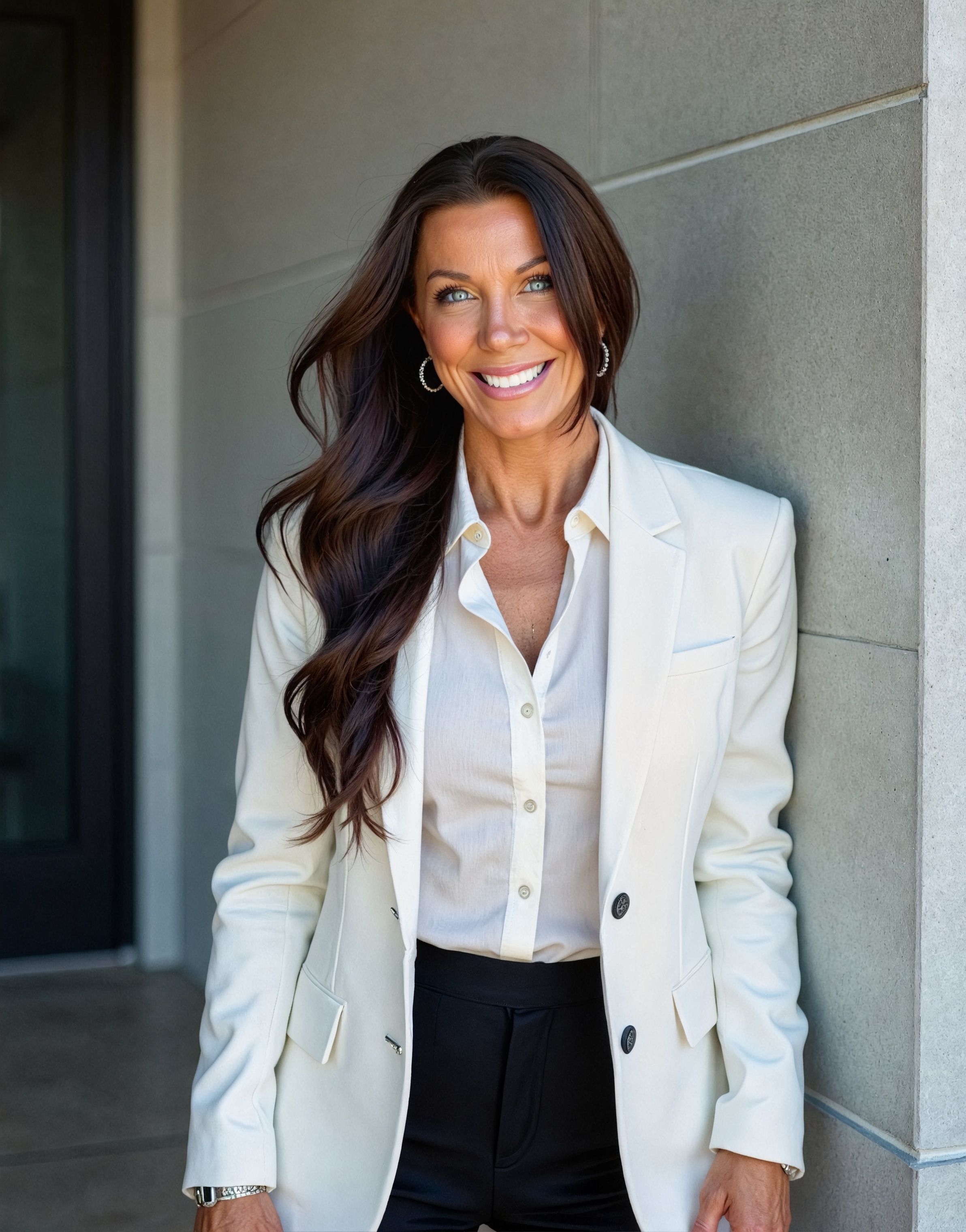8 Reasons Why I DON'T take Oral Minoxidil, Even if Dr. Haver Does
“For women over 45, blogs are like lighting a candle in a blackout--because they skipped giving us the menopause manual in school.” - Stacy G
Introduction:
Oral minoxidil is having a moment in the midlife health space. More and more women are being handed prescriptions for hair thinning, especially around perimenopause and menopause. And yes — even Dr. Haver is open about taking it.
Let’s be real. Just because something works for someone else — even a big-name menopause doc like Dr. Mary Claire Haver — doesn’t mean it’s the right move for you.

But here’s where I stand: I don’t touch it. And I won’t recommend it to my clients either — especially women 40+ who are already juggling fatigue, hormone chaos, inflammation, and liver overload.
This isn’t about fear. It’s about informed choices. And if you’re a woman trying to heal — not just mask symptoms — you deserve the full picture.👊
8 Reasons I Don’t Take Oral Minoxidil — Even If Dr. Haver Does
Let’s cut to it. Oral minoxidil might be trending — even among menopause doctors — but that doesn’t make it smart for your body. Especially not if you're already dealing with hormonal chaos, low energy, or stubborn fat that won’t budge.
1. It Was Never Made for Hair
Oral minoxidil was developed as a drug to treat high blood pressure — not hair loss. Hair growth was an accidental side effect. It’s being repurposed now without long-term studies on women in menopause. That’s a red flag.
2. It Puts Extra Load on Your Liver
Every pill you swallow has to be processed through the liver — and minoxidil is no exception. If your liver is already busy metabolizing hormones, detoxing chemicals, and trying to reduce inflammation, adding a daily vasodilator isn’t doing your body any favors.
3. It Doesn’t Fix the Root Cause
Minoxidil doesn’t solve the reason your hair is falling out — it just stimulates growth artificially. If the real issue is thyroid dysfunction, low ferritin, inflammation, gut issues, or stress, you’re not solving anything. You’re putting duct tape over a cracked foundation.
4. It Comes with Systemic Side Effects
Unlike topical versions, oral minoxidil works throughout your entire body — not just on your scalp. Common side effects include:
* Dizziness
* Swelling
* Fatigue
* Rapid heartbeat
* Water retention
Let me be clear: if you already feel puffy, tired, or foggy, this can make it worse.
5. It Alters Blood Pressure (Even If Yours Is Normal)
This drug dilates blood vessels. That means it can drop your blood pressure — even if it was already healthy. That can lead to fatigue, lightheadedness, or feeling "off" all the time. Midlife women don’t need another thing messing with their equilibrium.
6. It Can Trigger Hair Growth Where You Don’t Want It
Facial hair, chest hair, chin hair — these are documented side effects. I don’t know a single woman over 40 asking for more upper lip hair.
7. It Creates Dependence
If you stop taking it? The results fade. Any hair growth you've gained can shed within months. That means you’re stuck with it — or dealing with another round of loss. This isn’t healing. It’s a prescription hamster wheel.
8. There Are Safer, Root-Cause Ways to Restore Hair
Low estrogen, sluggish thyroid, chronic stress, nutrient gaps — all of these are common triggers of midlife hair loss. I work with clients every day to correct these from the inside out with:
* Strategic nutrition
* Liver detox support
* Mineral repletion
* Gut healing
* Hormone balance
* High-quality, non-toxic supplements
And when the body starts working again, so does your hair — no prescription required.
💬 Bottom Line:
Even if a respected doc uses it, I choose not to. Because I want long-term healing, not a workaround with risks. If you’re tired of being handed pills for every symptom, you’re not alone. There’s a better way. It starts with truth, not trends.
What About Topical Minoxidil — Is It Safer?
Topical minoxidil (like Rogaine foam or drops) is often considered the “safer” option — and yes, it does carry fewer systemic risks than the oral version. But that doesn’t make it harmless, and it still doesn’t fix the root issue.
Here’s what to know:
✅ Topical Minoxidil Pros:
* Available over the counter
* Applied directly to the scalp
* Less impact on blood pressure
* No prescription needed
* Can stimulate hair regrowth for some users
⚠️ But the Risks Still Matter:
* Absorption still happens through the skin and can enter circulation — especially with long-term use
* Common side effects include:
* Scalp irritation
* Flaking or redness
* Unwanted facial hair (yes, even from topical use)
* If stopped, hair loss often resumes
* It still puts pressure on detox pathways (your liver & kidneys) to some degree
* It doesn’t address hormone imbalance, inflammation, or nutrient issues
🧠 Bottom Line
Topical is less risky than oral, yes. But less risk doesn’t mean zero risk — especially if your system is already overloaded.
If you want to try it short term while you heal the root, I get it. But don’t let a bottle of foam distract you from the real solution: balancing your body so it doesn't need Band-Aids in the first place.
Looking for natural remedies for hair regrowth? Click HERE for my next blog... Natural Hair Growth that Works for Women 45+ Without Drugs or Expensive Products
Want to get to the root cause of your thinning hair? I am here to help!
Click HERE to learn more about SHIFT, a program specifically built for women 45+ dealing with hormone loss from perimenopause and menopause.
